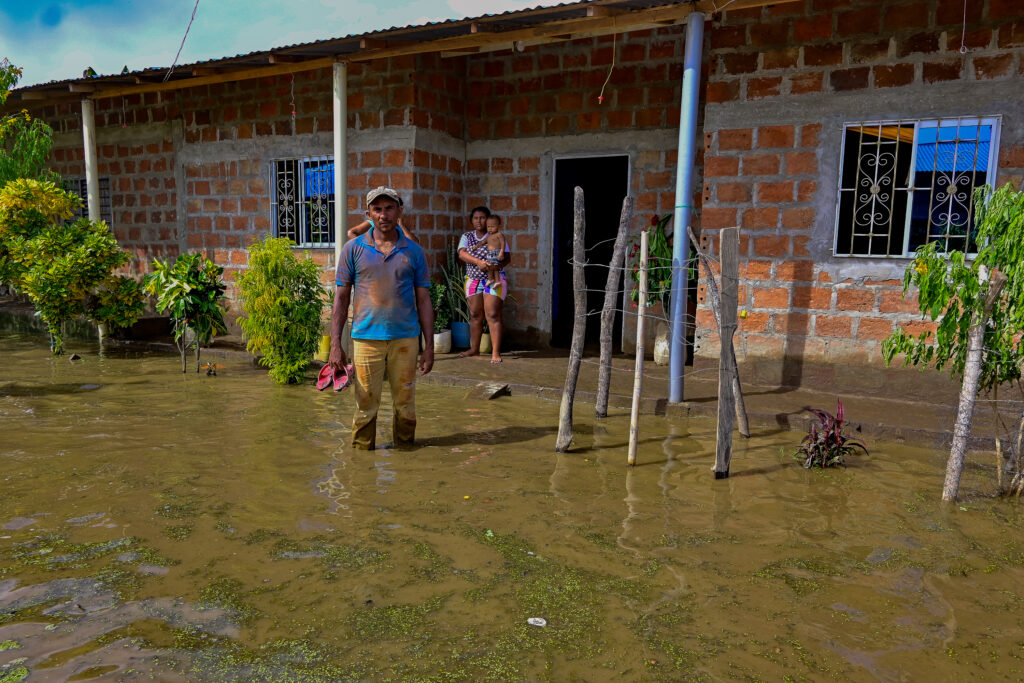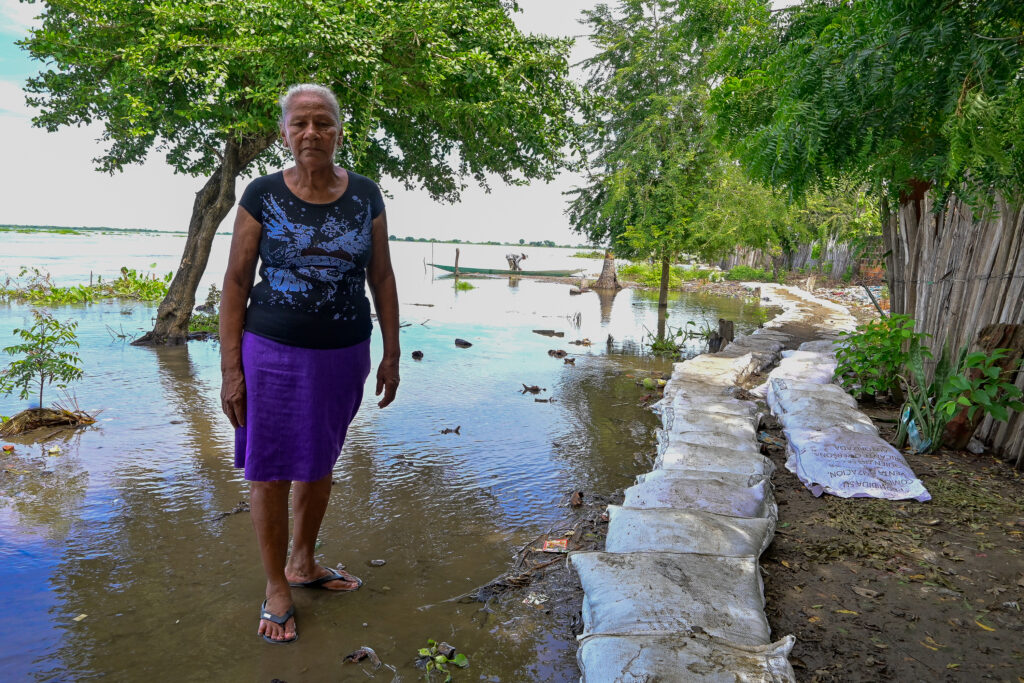By Duvan Caro/Photos by Elmer Arrieta
A longer version of this story was originally published in Spanish by Peninsula360.
TACAMOCHO, Colombia – Tacamocho is a small town that sits along the banks of the Magdalena River a few hours south from Colombia’s famed Caribbean coast. In addition to being hard hit by illegal drug trafficking, today this largely Afro-Colombian region is grappling with the combined consequences of environmental degradation and climate change.
For several years now, increased flooding along the banks of the Magdalena has been forcing entire villages off their lands, with little help from local officials.
“This erosion started three years ago, but it had been going on for a long time,” explains Marys Acosta, who has lived in Tacamocho all her life. Three years ago, she lost her house to erosion. Not long after, three main streets disappeared beneath rising waters. “We, with our own resources, have relocated. We have had no help from the government, from anyone. And now the situation has worsened,” she said.
Communities bordering the Magdalena River—which runs nearly 1,000 miles along the length of Colombia—have long been displaced and terrorized by armed drug traffickers. Poverty and other endemic issues have also gone ignored by national and regional governments.
That indifference has opened the door to multinational corporations eager to establish large-scale agro-industrial and mining projects that dissect and destroy local wetlands, leaving residents stripped of their lands.
Despite these challenges and in the absence of government support, residents have banded together to find solutions. “SOS Tacamocho” is a volunteer collective that provides community monitoring of shifting river levels, helping residents prepare for possible flooding and erosion while also alerting relevant authorities.
Members of SOS Tacamocho walked along the river’s edge, pointing to small dams made of wood and sacks filled with earth, all recently put there by residents, precariously holding the turbulent waters at bay.
Acosta, a volunteer with SOS Tacamocho, says erosion and flooding puts the town at imminent risk, adding that local governments have said they do not have the available land needed to relocate displaced families.

“If we stay here, we run the risk of erosion, and if we leave, we will have to be outdoors, in the parks or in the schools. Because we have nowhere to go, nowhere to locate ourselves. What we want is for the national government… to remember Tacamocho, and not just to come here to collect votes.”
From a lifeline to an enduring threat
The Magdalena River bathes vast plains that make Colombia’s Caribbean Coast a richly productive area also famed for its lush fauna and flora. Verdant swamps and mangroves give way to mountains that crown the region, making it a destination point for locals and foreigners.
Yet along the riverbank, large cattle ranching projects have been established and, in recent years, buffalo pastures have been added that destroy much of the local vegetation. Added to this are large extensions of monoculture timber plantations that separate the mountains from the marshes and the marshes from the river, directly affecting the natural flow of the Magdalena and exacerbating flood risks.
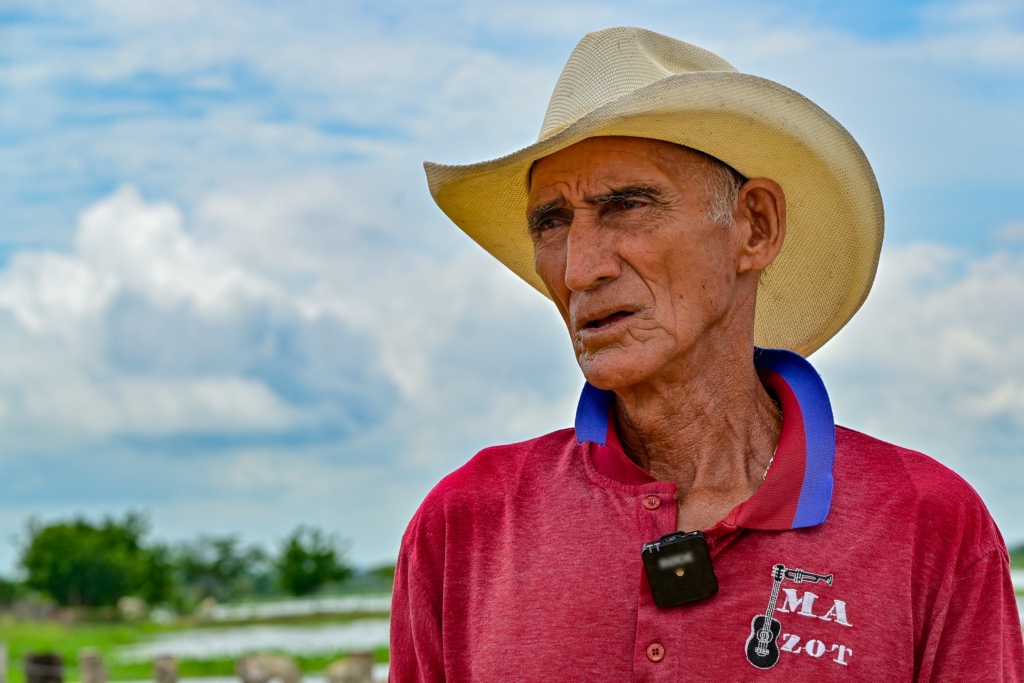
The town of Zambrano, two hours southeast of Cartagena, grew up along the banks of the Magdalena, which historically fed local farms and made the town a strategic way station for local and national trade. Today, the threat of ongoing erosion and catastrophic flooding have turned the river from a vital lifeline to an enduring threat.
“I have been living along the Magdalena River for 20 years and today we are suffering because of the flooding,” says Pabla Martínez Rodríguez. “We have not received a visit, much less help from anyone, not from the government, nothing. We are alone. My house has been sinking since December, when the floods started. If the floods continue, we will have to go somewhere else.”
Along La Albarrada, one of several historic streets that crisscross Zambrano, sacks filled with earth are piled several meters high and fixed with pieces of wood. This makeshift dam is all that stands between the Magdalena’s rising waters and the displacement of approximately 11 thousand people living in Zambrano.
The flooding is also having an impact on surrounding farms, destroying crops and driving up prices for basic food items.
“Families that depend on the planting of cassava, beans and other products are suffering because of the flood,” said Julio Humberto Ahumada, a farmer whose lands were inundated. “We have been left without work, without land and without a home because everything is full of water, and we don’t know when it will end.”
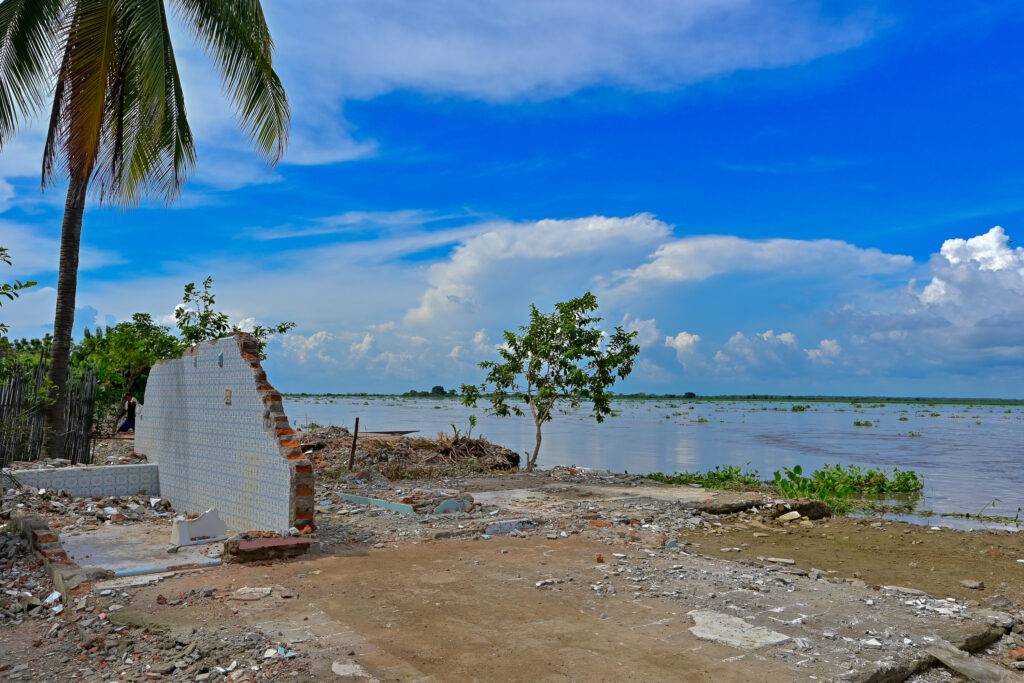
Relocation on paper
In 2017, three years after flooding began to intensify, a resident of Tacamocho sued the municipal government in an attempt to force officials to support the town’s relocation. A ruling in favor of the town’s demands was issued in 2019, urging the adoption of measures that would support the town being moved to a safer location.
But according to community leader and SOS Tacamocho volunteer Manuel Gamarra, to date no steps have been taken by the government to follow through.
“We are living in one of the most serious situations in our town,” says Gamarra, pointing to nearby houses destroyed by the flooding. “The river is coming head-on against the us, threatening property and human life. We have lost two people here that has hurt us very much.”
According to SOS Tacamocho close to four hundred families have been displaced.
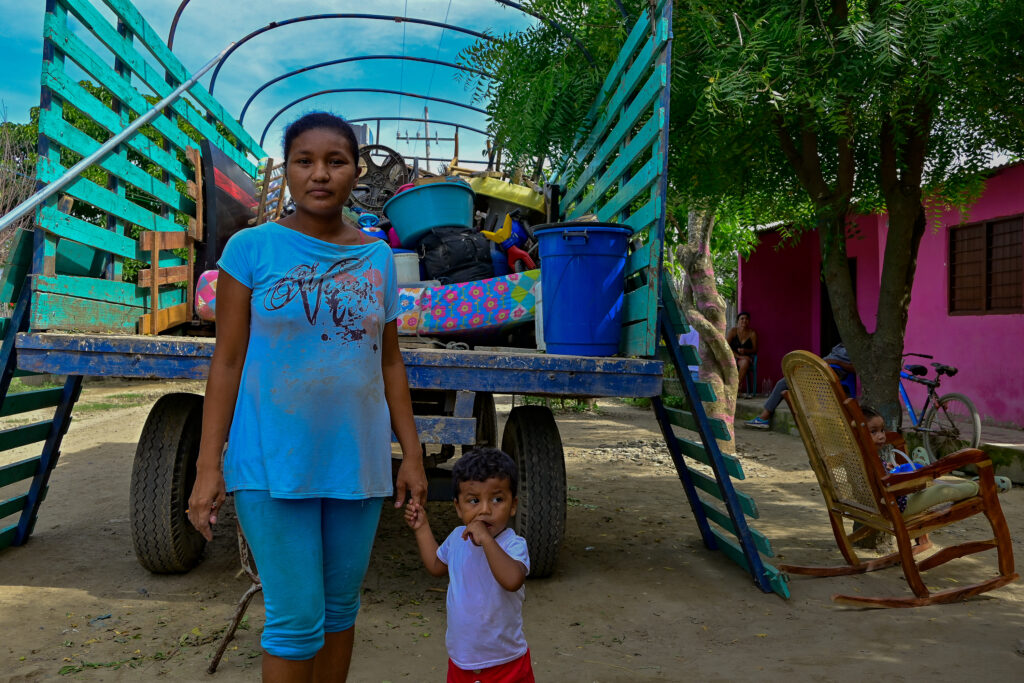
“What we are currently seeking is to enforce the ruling that Tacamocho must be relocated. We want the mayor’s office to have that land, to allocate the resources to take the first step, because we know that without that there will be no relocation,” says Gamarra.
In our tour through the streets of Tacamocho, residents spoke of neighbors who had moved to lots once used as pig troughs to escape the flooding, dwellings they said were unfit for human habitation.
They said the mayor’s office had provided a single tractor for families wanting to leave, offering 400,000 pesos (approx. $90 US) per family to cover moving expenses and 80,000 pesos monthly for rent.
“It’s been 15 days since the water has been inside our houses, and the only hope is that the flooding recedes. But what we see is that the water is rising and we are here with no place to go with our children. We are alone.”
Duvan Caro is a youth journalist living in Colombia. He wrote this story in collaboration with Peninsula360.



